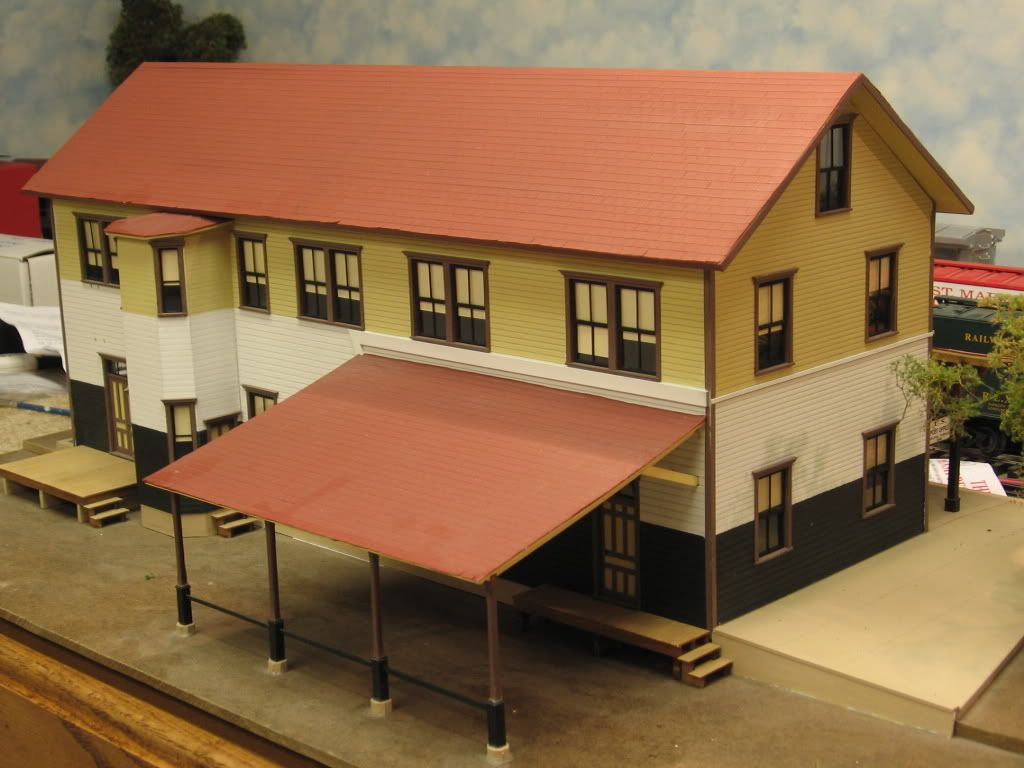I spotted this announcement when I visited the BTS website this morning.
Time has come to find a new home for Babbitt Railway Supply
Bill explains is reasons in the post.
Jan
|




|
I spotted this announcement when I visited the BTS website this morning.
Time has come to find a new home for Babbitt Railway Supply
Bill explains is reasons in the post.
Jan
Replies sorted oldest to newest
Announcement was in the current issue of RMC, too.
At one time I was really interested in getting a couple of these engines, but after years of seeing absolutely nothing offered I gave up. For everyone's sake I hope someone buys what's there and can honestly do something with it. It's a shame it took so long to come to this. Sorry but that's my honest opinion.
I didn't see any tantrum.
Here's the deal: check out how easy it is to purchase used All Nation locomotives and kits. The Ten-wheeler tops out at $300, and savvy buyers wait for one at $150. The Mountain is massive, but has no prototype. Two of them are in the Stout auction. $300 tops - opinion, of course.
So let's say that a new owner could sell either kit for $500. Would you buy it, to support a new business? Or would you save $200 and buy used?
Now suppose you pay $10,000 for the parts, jigs, patterns, and rights. First thing to do is tell me what foundry you will use for sand casting.
Second thing is - how many models must you sell before your investment pays off? Is there a market for that many? Say you can make a slight profit at the $400 mark - then $100 goes toward recouping your investment. That's 100 kits. That is really optimistic on all counts.
Don't hold your breath . . .
BTS has exceptional laser cut kits, with very good instructions.


Nothing offensive about that. Probably not the main reason you will never see new A-N kits.
Well, I'm 3 years late. Back in 2006 BTS announced a kit to go on an All Nation chassis, a 2-6-2 Prairie. It had a resin boiler, cab, and tender. The kit never came out. BTS currently sell the tender as a crane tender. It appears that BTS was planning to replace the sand cast upper with highly detailed resin uppers. That solves the foundry problem and eliminates the parts with the crudest detail. I was ready to buy one but as I said it never came out.
AN kits were nice and a staple of the hobby for years. They were relatively low priced for steam locos and relatively easy to build. I bought and Built a 4-4-0 kit years ago when I modeled an imaginary road - Ohio and Beaver Creek - named for the OHio River and Beaver County where I lived as a kid.
However, the only real prototype is the B&O 4-6-0. I think class B18. Some of the others shared parts which the 4-4-0 did. I think the pacific strongly resembled a USRA and the 2-6-2 was sort of based on the Burlington prototypes.
The level of detail that today's modelers expect makes these locos as built obsolete. I have seen some of the 4-6-0s detailed out to match new brass however.
Also after BAbbitt purschased the line from AN, they upgraded the mechanisms a lot. They added springing to the driver boxes and and modern enclosed gearboxes with reduction gearing. They may have added can motors too.
Smoothing that boiler looks like it could put the “T” in “tedious”…
I wonder if back in the day those pinholes and flaws got filled with plumbers lead—no matter the material it would have to be something that would finish well, stick well, and not flake off or crack when drilling for piping and detail part attachment points.
Jeff C
I would love to find a Cary boiler but have not run across one yet.
Access to this requires an OGR Forum Supporting Membership
